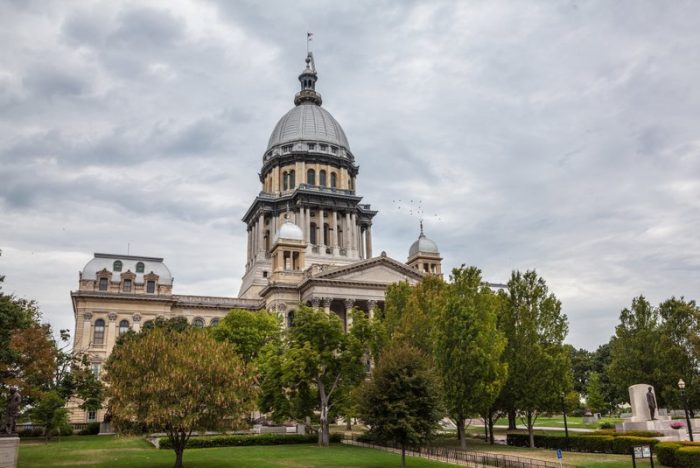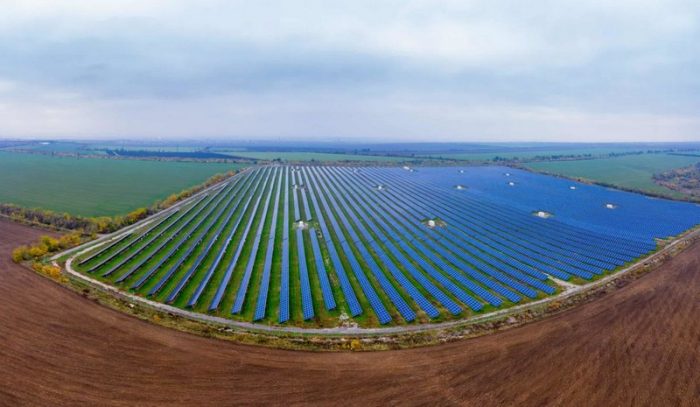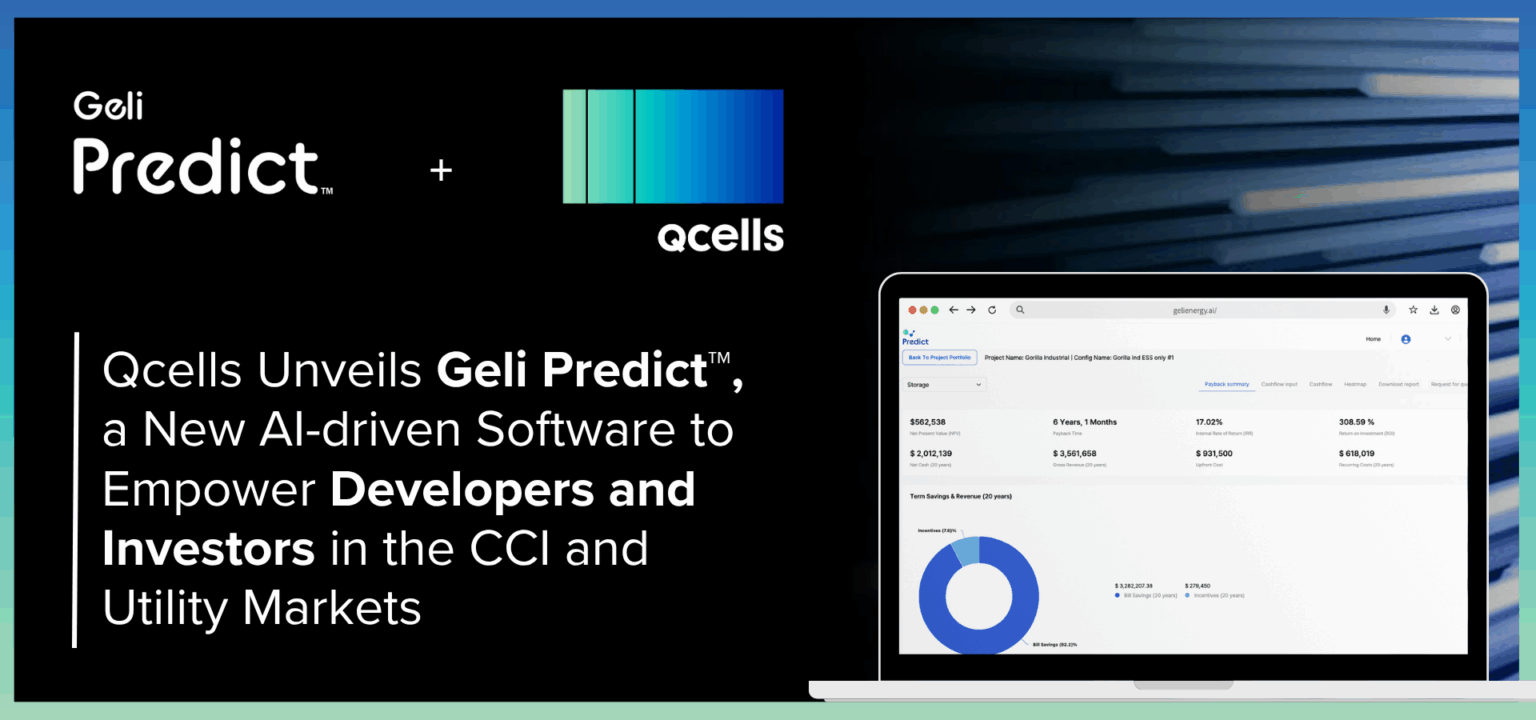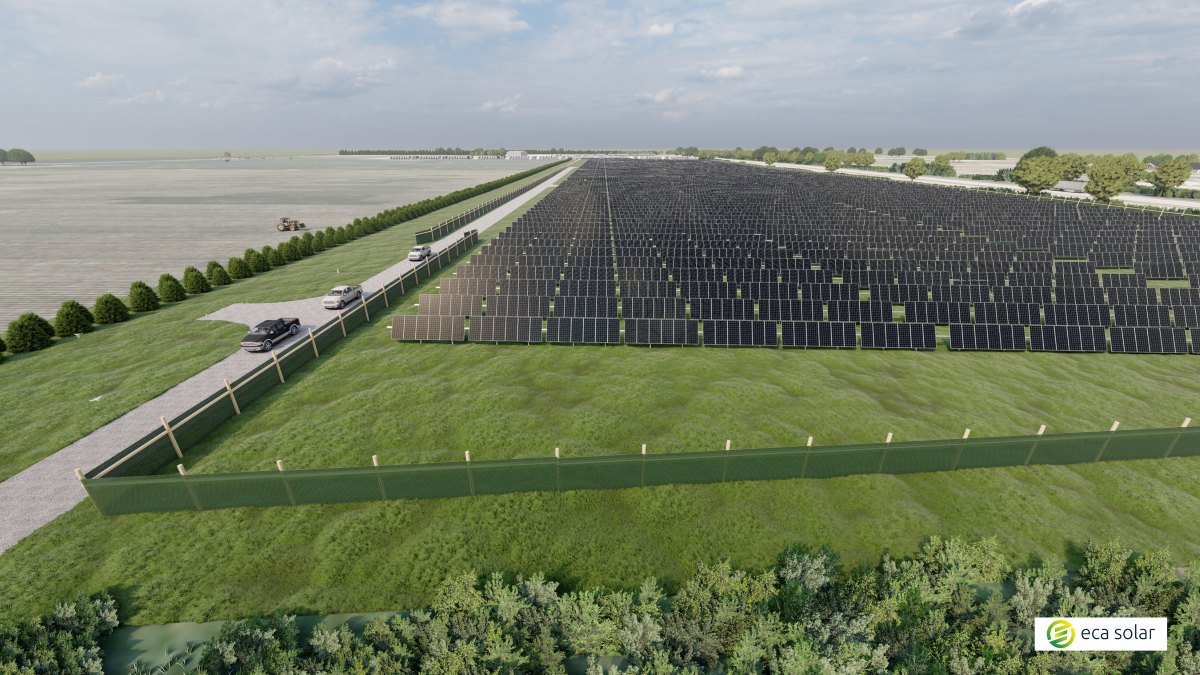How Illinois changed its clean energy future

Illinois made big headlines this week, passing significant legislation, the Climate and Equitable Jobs Act, that puts Illinois on a path for 40 percent clean energy by 2030 and 100 percent clean energy by 2050. Industry, labor, community, and environmental advocates worked for months to craft a bill in coordination with leading legislators. With major job losses across the renewable energy industry already in progress, the bill will arrest impending layoffs and set policies that put solar jobs on a positive trajectory for the next decade.
“Illinois kept its promise to the solar workers who have dedicated their careers to building our renewable energy future,” said Lesley McCain, executive director of the Illinois Solar Energy Association. “After years of advocacy, we now have a path to reverse job losses and deliver clean electricity for families across Illinois.”
The news was met by the usual rounds of applause as well as some immediate commitments from companies to do business. Here’s a recap.
Benchmarks, goals and incentives
- The 40% renewable energy goal will spur the construction of over 4,000 MW of new wind, 4,000 MW of new utility-scale solar, and 5,800 MW of new rooftop and community solar.
- The Illinois Power Agency will procure approximately 2.5 million new renewable energy credits (RECs) by June 2022 and 3.8 million new RECs per year from
2022-2030. - The RECs will support wind energy (45%) utility-scale solar (25.85%) brownfield solar (1.65%) and community, rooftop and residential solar through an adjustable block program (27.5%).
- Credits in the adjustable block program are divided among community solar (30%), large distributed generation (20%), small distributed generation (20%), schools (15%), equity eligible projects (10%) and Community driven community solar (5%).
- Funding for Illinois equity solar programs increases from $10M to $50M annually.
- Goals set for Coal to Solar & Energy Storage. Interim emissions reduction targets are set, beginning in 2038 for municipal IL coal and establishing a date certain to retire all fossil fuel generation in the state by 2045.
- Creates a self-direct renewable energy buyer provision that allows corporate customers to outpace the RPS through voluntary procurement mechanisms without charging them twice for doing so.
- Ends formula rates to align utility spending with performance measures driven by reliability, equity, affordability, and clean energy goals.
- Prioritizes investment in the lowest-cost clean energy resource – energy efficiency. The bill extends the state’s energy efficiency resource standard (EERS) out to 2040 with clear, mandatory targets and brings back into the fold large commercial and industrial companies investing in efficiency upgrades within their own facilities.
- Creates a Beneficial Electrification program process for utilities at the Illinois Commerce Commission that will expedite the deployment of light-, medium- and heavy-duty EVs and associated charging infrastructure across Illinois. Facilitates the creation of innovative new rate designs aimed at electrifying public and private fleets, and provides incentives both for the deployment of charging infrastructure and the purchase of electric light-duty cars and trucks.
Equity a crucial component
Just as important as the clean energy focus is the requirements for diversity, equity and inclusion. Key equity provisions include supplier diversity requirements for companies that participate in the state’s renewable energy program, a dedicated block of renewable energy incentives for businesses from underserved communities and requirements for utility-scale renewable energy projects to complete project labor agreements that directly address the hiring of minority employees.
“Expanding access to low-cost renewable energy through community solar is vital for Illinois to make the transition to clean energy in a manner that is equitable and just,” said Laurel Passera, policy director for the Coalition for Community Solar Access (CCSA). “We applaud the legislature for passing a bill that will provide the needed pathway to improve Illinois’ energy infrastructure, create good-paying jobs, and provide access to many thousands of residents, businesses and community organizations who do not currently have the opportunities to participate in the clean energy economy.”
The bill also includes the strongest labor provisions in the nation and guarantees that renewable energy growth will create tens of thousands of union jobs in Illinois. All workers building commercial and community-scale renewable energy projects will be paid prevailing wages and utility-scale projects will complete project labor agreements with organized labor.
Community solar tweaks
More than 50 percent of American households don’t have access to solar power because they either rent, live in a multi-tenant building, have roofs unable to host a solar system, or live in a service territory of a utility that won’t allow it. Through community solar, people can be connected to a local solar installation that would provide subscribers with equal access to the economic and environmental benefits of solar generation
A number of improvements were made to the state’s existing community solar program.
It expands the program’s capacity from 213 megawatts (MW) to over 1.5 GW over the next decade.
It transitions the project selection process from a random lottery with just a one in ten chance of success to a more orderly queue process that is based on project maturity, which will improve the speed of project development and grid interconnection
It enhances the bill savings for customers by standardizing the bill credit rate and by increasing allowable project size from 2 to 5 MW, which provides additional savings due to economies of scale.
Immediate actions

Right after the bill passed, National Grid Renewables pledged to donate an estimated $720,000 to the Kansas, Illinois School District through its 200 MW Prairie Wolf Solar Project located in Coles County, Illinois. Prairie Wolf will support The Prairie Wolf Education Fund via annual donations of approximately $36,000 over a twenty-year period.
As part of its community-focused and farmer-friendly foundation, National Grid Renewables initiates charitable funds for each of its owned and operational large scale renewable energy projects.
Retail electricity and power provider Vistra was a big proponent of the Coal to Solar & Energy Storage provisions to aid a transition in plant communities and reuse the infrastructure already at plant sites, including transmission lines and interconnects. Vistra estimates it will invest over $550 million to build the Coal to Solar & Energy Storage Act portfolio in Illinois.
An economic impact study commissioned by Vistra estimated that its nine-site construction program would create more than 2,200 full-time equivalent jobs, generate over $180 million in earnings for workers and add over $300 million to the state’s economic output from 2022 to 2025, all in downstate Illinois communities.
The legislation will support Vistra’s development of the following projects:
Combined Utility-Scale Solar & Battery Energy Storage Sites:
- Baldwin, 68 MW Solar, 9 MW Battery Energy Storage
- Coffeen, 44 MW Solar, 6 MW Battery Energy Storage
- Duck Creek, 20 MW Solar, 3 MW Battery Energy Storage
- Hennepin, 50 MW Solar, 6 MW Battery Energy Storage
- Kincaid, 60 MW Solar, 8 MW Battery Energy Storage
- Newton, 52 MW Solar, 7 MW Battery Energy Storage
Stand-Alone Battery Energy Storage Sites, at plant sites that did not have the characteristics to support utility-scale solar development:
- Edwards, 37 MW Battery Energy Storage
- Havana, 37 MW Battery Energy Storage
- EEI/Joppa, 37 MW Battery Energy Storage





Comments are closed here.